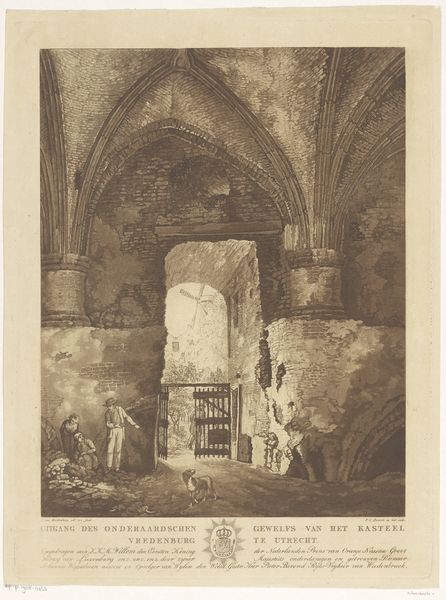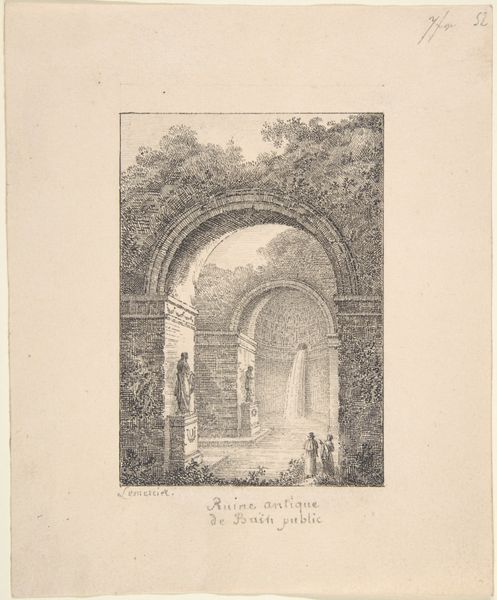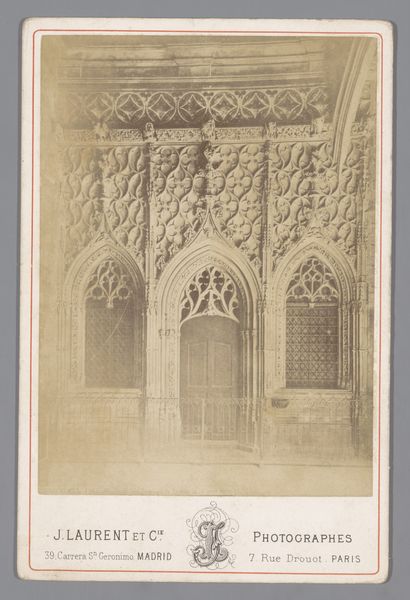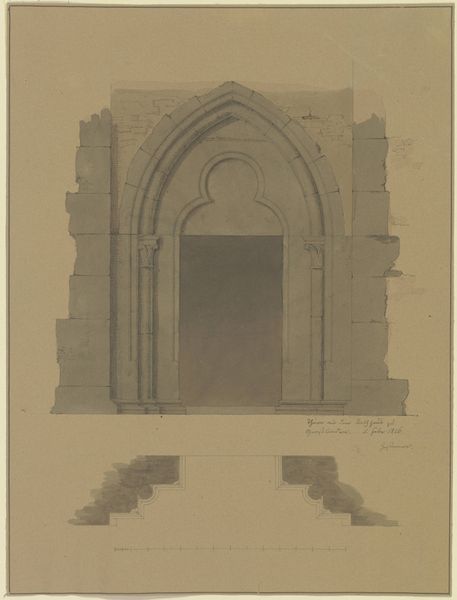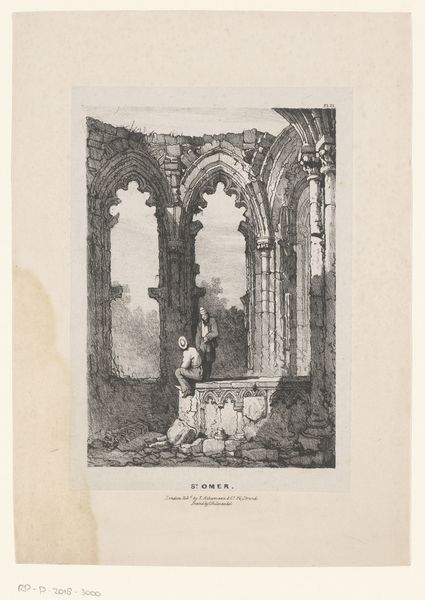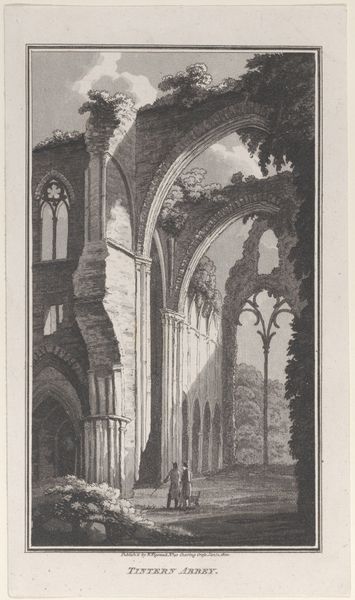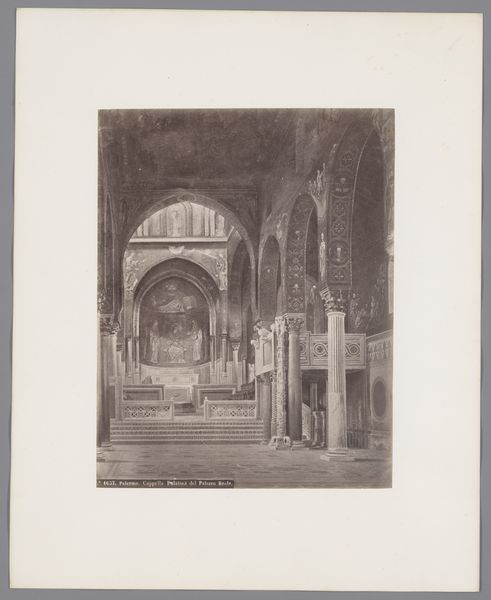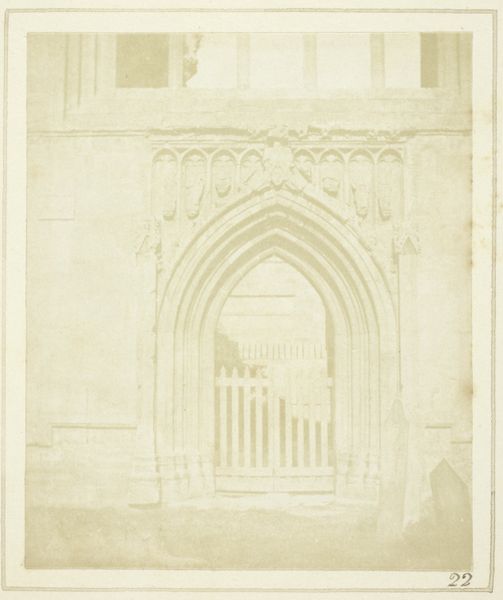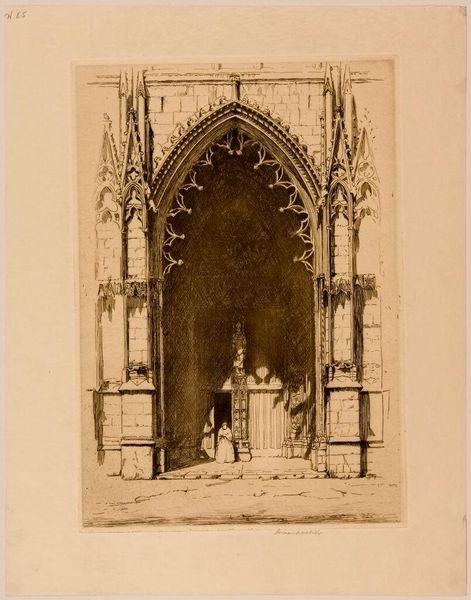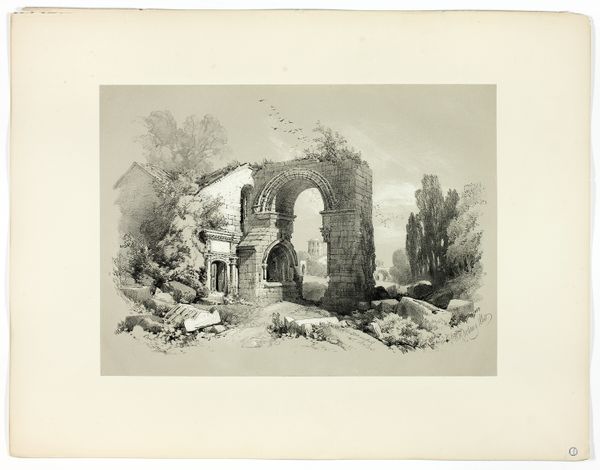
Zugemauertes gotisches Portal mit der Inschrift_ zum Andenken 1826 1826
drawing, ink, architecture
drawing
16_19th-century
landscape
figuration
ink
romanticism
architecture
Copyright: Public Domain
Curator: I find myself drawn to the melancholic quiet of Josef von Stockhorn's ink and wash drawing, "Zugemauertes gotisches Portal mit der Inschrift_ zum Andenken 1826," or "Walled-up Gothic Portal with the Inscription_ in Memory 1826," created in 1826. Editor: There’s a stillness here, almost a haunting quality. The soft browns and grays create a muted atmosphere. It feels like a memory fading away. Curator: Indeed. The inscription translates to "in memory," so the sealed portal acts as a symbol. What does it conceal, what is meant to be forgotten or perhaps mourned? How does this abandonment tie into 19th-century architectural and social practices of dealing with now-unusable religious structures? Editor: Absolutely. The Gothic portal itself, though blocked, speaks to enduring spiritual values. It's adorned with religious and militant figures, suggesting faith and protection. Yet, these very symbols now stand guard over nothing, representing a past that cannot be recovered. Note how the details contrast with the rough-hewn brick infill that seals the portal's doom. Curator: Exactly. Romanticism loved to evoke a sense of loss, and I wonder about Stockhorn's own engagement with the medieval past. Was he part of a larger conversation about preservation and conservation, or did this drawing spring from more personal reflection on loss? We can investigate, for instance, whether he felt connected to the architecture around him in social life. Editor: The framing narrative is powerful. The artist invites us to imagine what exists beyond this stone barrier. The blocked doorway could even represent suppressed memories, anxieties, or cultural shifts happening during the artist's time. Curator: The date, 1826, is intriguing. Europe was in a state of flux, experiencing revolutions and the rise of new political orders. Stockhorn offers an insight into how individuals navigated this time through art. Editor: Looking at it again, the subtle details of the plants growing near the base feel poignant – life continuing to assert itself against a backdrop of historical silence. It softens an otherwise rigid form, whispering that some truths cannot remain buried. Curator: A valuable reminder that every artwork reflects broader movements—economic, artistic, and historical forces all impact creative work and open avenues for us to question present assumptions. Editor: This makes it feel not only like an artistic vision of a past but like an opening, though blocked, for our own introspection.
Comments
No comments
Be the first to comment and join the conversation on the ultimate creative platform.


